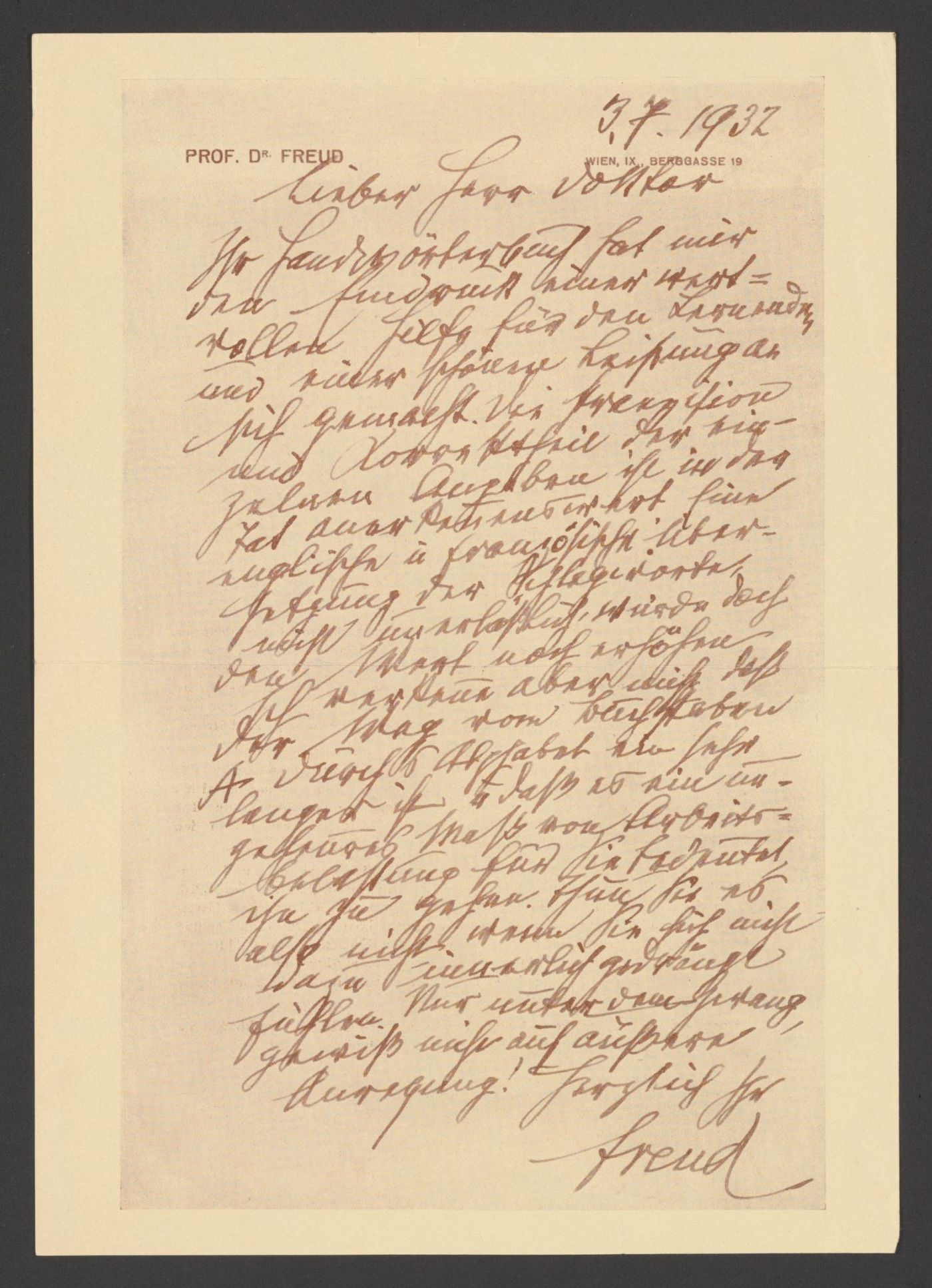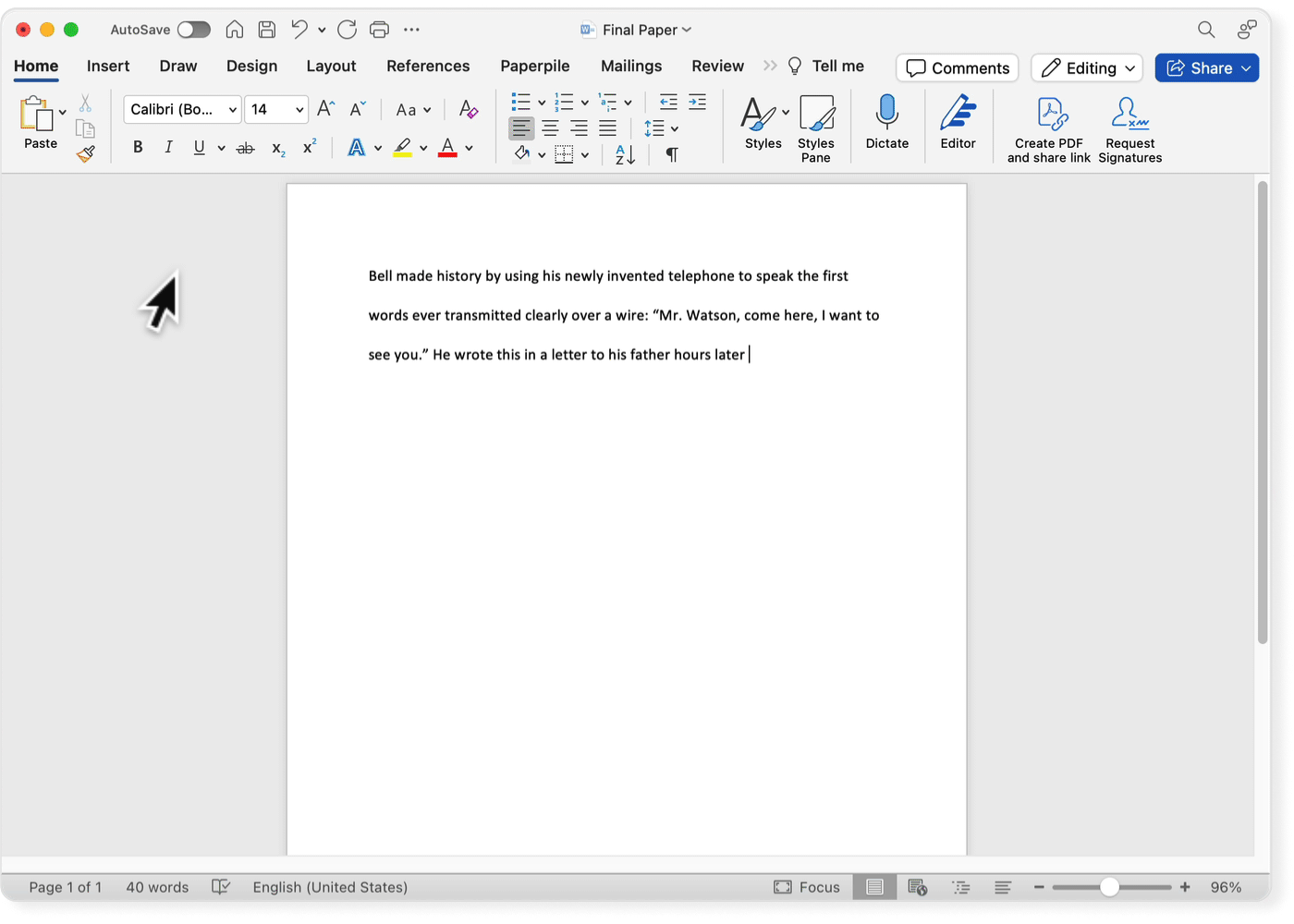Are letters primary sources?

A letter is a primary source. However, sometimes you may not be given access to the actual letter, for example, if it is damaged, fragile, or very old. In these cases, you will be given a facsimile or digital copy of the letter. This still counts as a primary source because the content of the letter has not been changed; it is simply being preserved.
➡️ What is a secondary source?
➡️ What is the difference between primary and secondary sources?

A letter can be used as a primary source in a number of different scenarios. You may have already come across our information about primary and secondary sources, and the differences between them. Primary and secondary sources complement each other, and both are needed for research projects. It is worthwhile to find out the different ways in which they can be used to complete a research paper. Here we take a closer look at why exactly a letter qualifies as a primary source.
Why does a letter qualify as a primary source in my paper?
Generally speaking, letters are used as historical evidence or evidence in legal cases. Letters are written records of events and communication between people, so any information contained within is evidence of an event or interaction which happened.
When conducting historical research, a letter provides insight into the society of the time. It is for this reason that letters are most commonly used for historical research. However, it is important to know that if you are looking at a collection of letters belonging to someone, those letters were not written by that person. The letters contained in these types of collections are letters received by that person.
Letters received can provide us with an insight into the relationship between the two correspondents. If they are personal correspondences, they are most informative for biographies or overall histories. It is not uncommon for a personal letter to act as a reflection upon a meeting between the receiver and composer, or on an event. Formal correspondences provide information about the financial, legal, or social status of the receiver.
Therefore, the other use letters have in research is for legal papers. Letters as written records are admissible in court. They can be used as evidence. Written records are very important for legal cases because they provide solid evidence or proof of an interaction. Phone calls, while there may be evidence of them taking place, lack the substance of conversation that is easily accessed by reading a written account of an interaction.
How to cite a letter
The citation style used will determine the exact citation format. This is how you would cite a letter in APA:
Bell, A. G. (1876, March 10). [Letter to Alexander Melville Bell]. Library of Congress. http://hdl.loc.gov/loc.mss/magbell.00500211
Instead of worrying about the correct format of your citation in any given citation style, you can use a reference manager like Paperpile to automatically and correctly generate your citation for you.
Collect your sources and keep them tidily organized in your Paperpile library. Switch between thousands of citation styles and cite your references directly in Google Docs, Microsoft Word, and LaTeX:

Frequently Asked Questions about letters as primary sources
📨 Is a letter from civil war a primary source?
Yes, letters from the civil war are primary sources. Letters are first-hand written records of events and communication between people, so they count as primary sources.
📬 Is a letter from Pearl Harbor a primary source?
Yes, letters from Pearl Harbor are primary sources. Letters are first-hand written records of events and communication between people, so they count as primary sources.
💌 Is a letter from a soldier in Vietnam a primary source?
Yes, a letter written by a soldier in Vietnam is a primary source. It provides insight into the history of that time.
📩 Is a letter from revolutionary war a primary source?
Yes, a letter written by someone involved in the American Revolutionary War is a primary source.
🇹🇷 Are the
Yes, the "Turkish Letters" are a primary source. Letters are first-hand written records of events and communication between people, so they count as primary sources.


